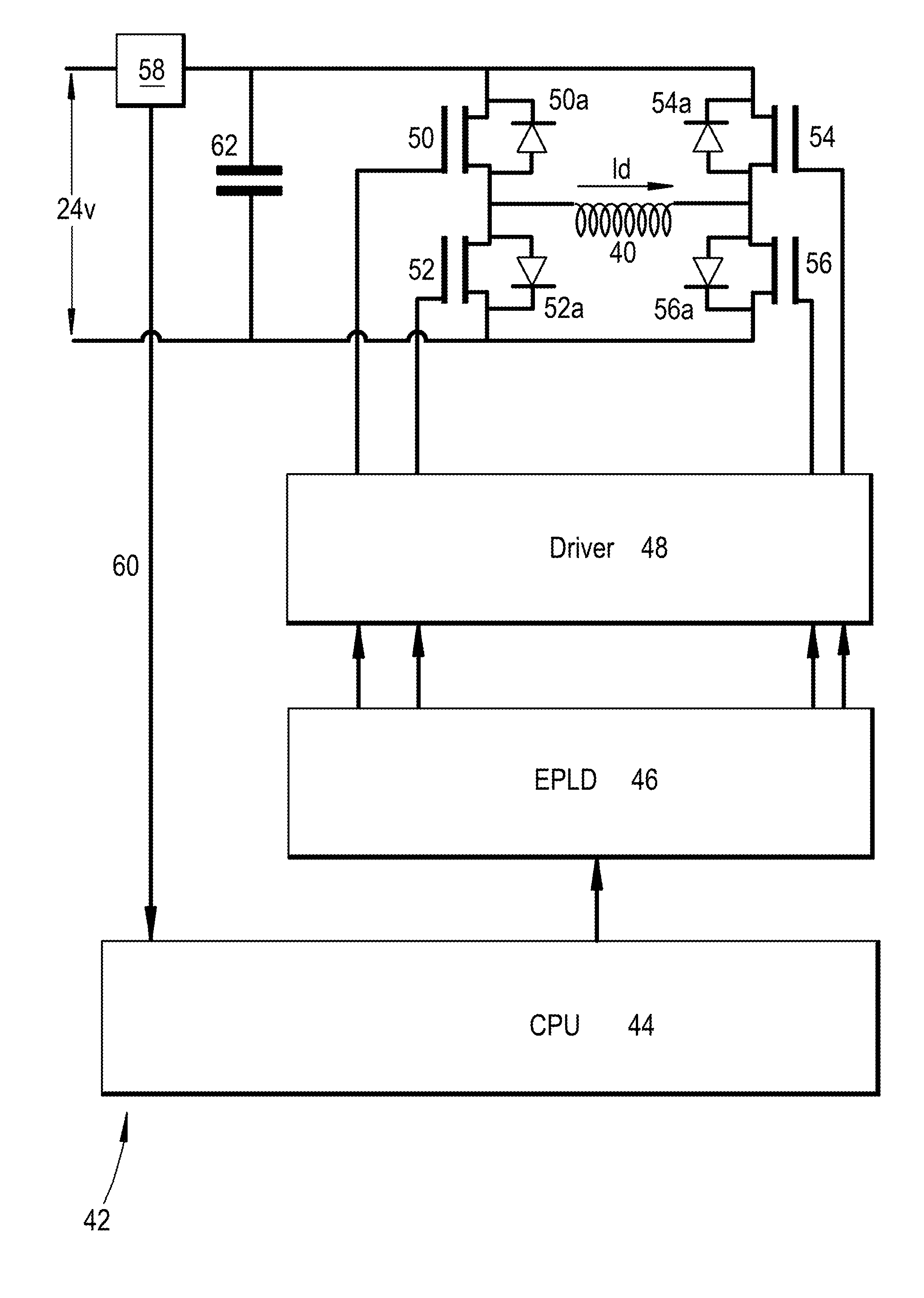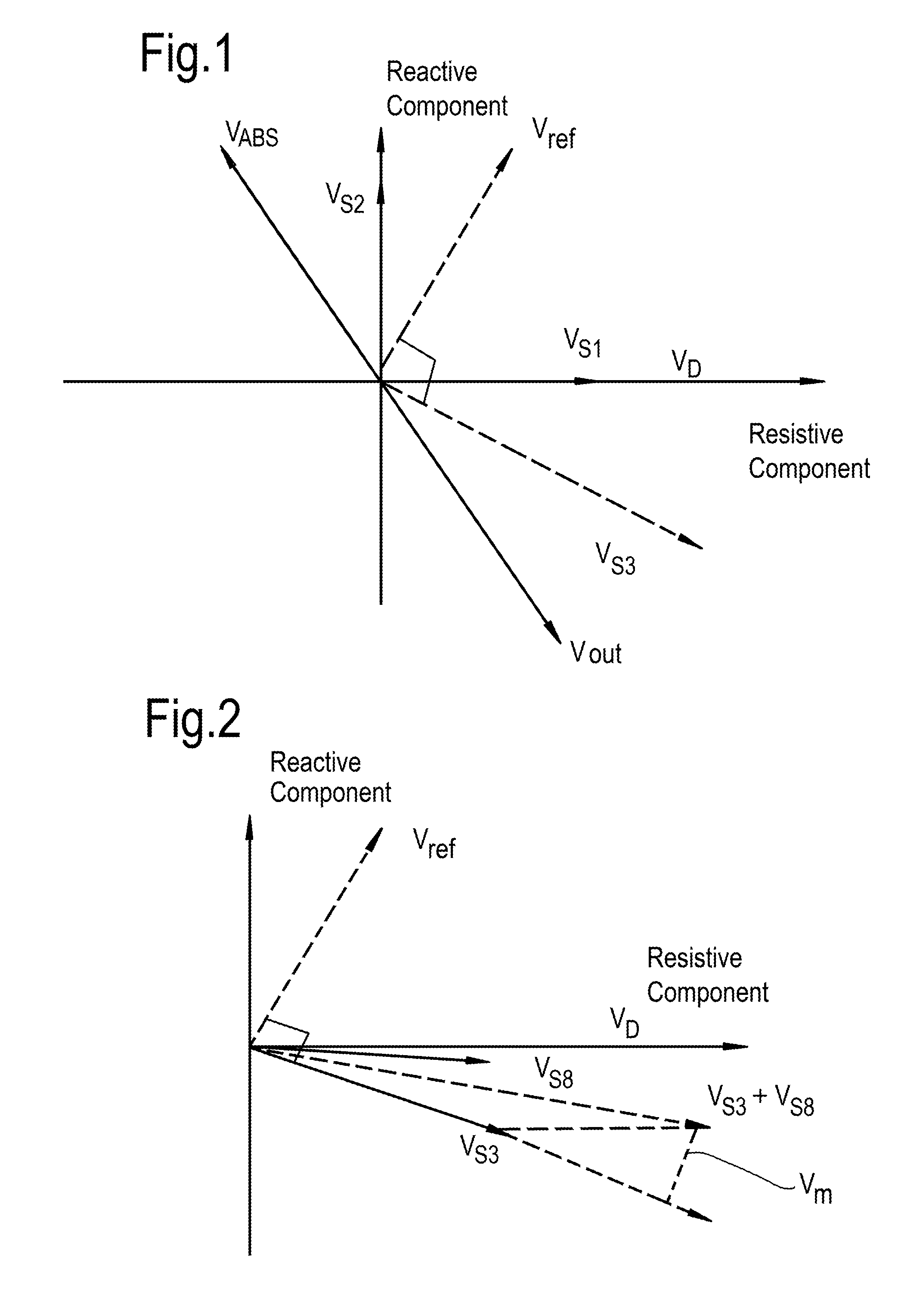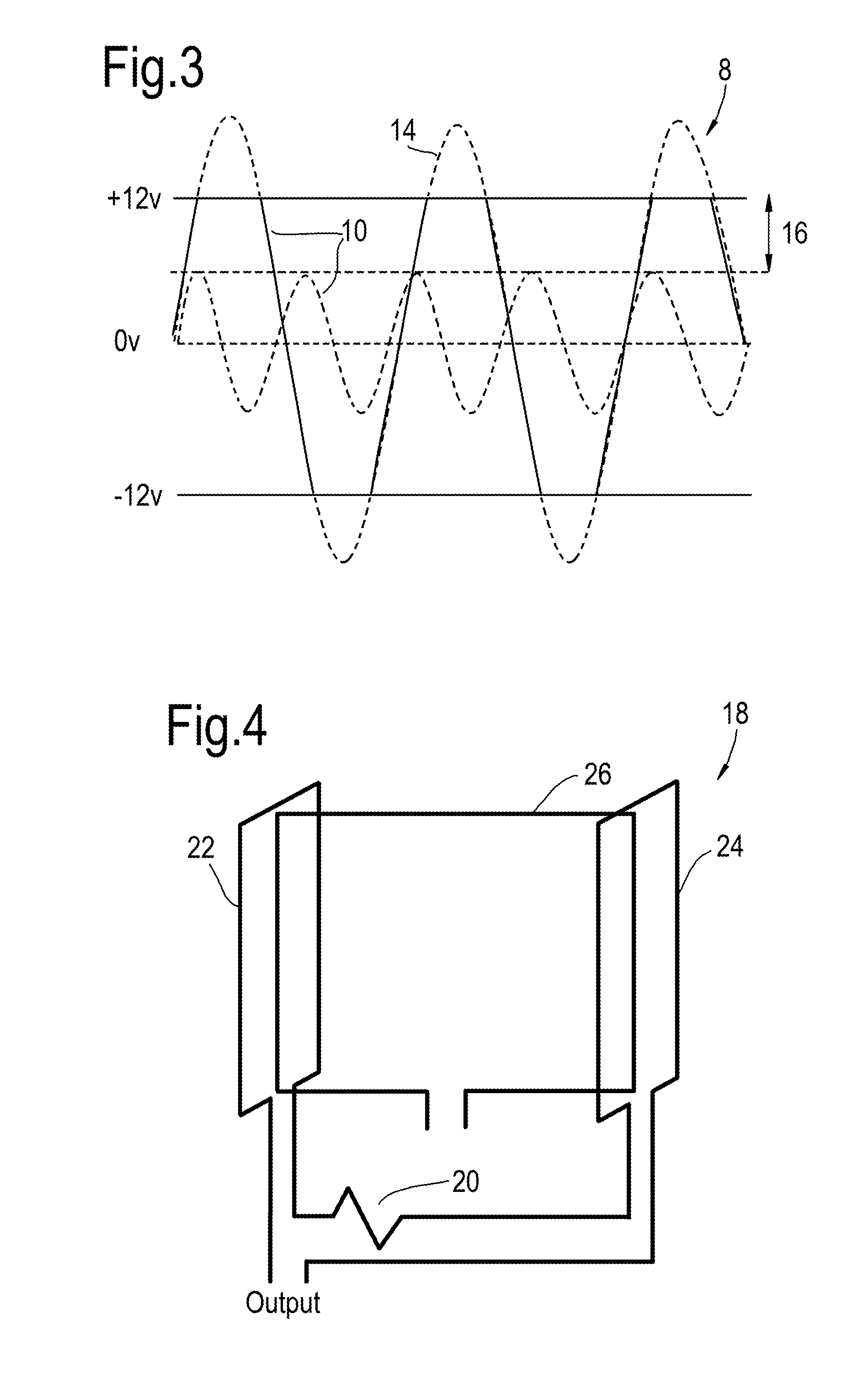Metal detector
a metal detector and metal detector technology, applied in the field of metal detectors and metal detectors, can solve the problems of complex establishing an adjustable balance signal to nullify or reduce unable to achieve the effect of nullifying the output signal, and unable to achieve the effect of reducing the so as to achieve the effect of compensating for any imbalance in the output signal, reducing the complexity of the establishing balance signal, and reducing the frequency rang
- Summary
- Abstract
- Description
- Claims
- Application Information
AI Technical Summary
Benefits of technology
Problems solved by technology
Method used
Image
Examples
first embodiment
[0094]FIG. 8 shows a circuit diagram 70 of the present invention, which is an adaption of the circuit diagram described in the international patent application WO 2006 / 087510, and thus the components in common behave similarly. In summary, the driver circuit shown in FIG. 7 is represented by the dashed outline / box 42. The driver circuit 42 comprises a central processing unit (CPU) 44, an electrically programmable logic device (ELPD) 46 and a driver 48 connected to four field effect transistors (not shown) for simplicity. For simplicity, the driver 48, FETs (50 to 56) and the diodes (50a to 56a) of FIG. 7 are represented as the “driver”48. The EPLD 46 stores a plurality of drive maps, each drive map containing a switching sequence for the switches (FETs) to drive the drive coil 40 at a respective predetermined operation of frequency of the metal detector. The CPU 44 selects an appropriate drive map from a plurality of drive maps stored in the electronically programmable logic device ...
third embodiment
[0126]The flowchart in FIG. 14 shows an example of the sequence of steps used to calibrate any imbalance in the metal detector for a particular product type under investigation with reference to the potentiometers as shown in FIG. 8a. However, the sequence of steps shown in the flowchart in FIG. 14 is applicable to the other embodiments where the adjustable balance signal is varied by a tuning circuit or the EPLD. The first stage of the process involves the selection of the ideal frequency of operation of the metal detector for a particular product 136 under investigation. This is usually done manually depending upon the operator's experience but can be done automatically as described above. Once the frequency is selected, the processor then sets the metal detector to operate at that frequency. The system then searches the database and retrieves the stored adjustment of the potentiometer 138 from the earlier calibration process (see FIG. 11a) at the corresponding operating frequency...
PUM
| Property | Measurement | Unit |
|---|---|---|
| frequency | aaaaa | aaaaa |
| frequencies | aaaaa | aaaaa |
| threshold | aaaaa | aaaaa |
Abstract
Description
Claims
Application Information
 Login to View More
Login to View More - R&D
- Intellectual Property
- Life Sciences
- Materials
- Tech Scout
- Unparalleled Data Quality
- Higher Quality Content
- 60% Fewer Hallucinations
Browse by: Latest US Patents, China's latest patents, Technical Efficacy Thesaurus, Application Domain, Technology Topic, Popular Technical Reports.
© 2025 PatSnap. All rights reserved.Legal|Privacy policy|Modern Slavery Act Transparency Statement|Sitemap|About US| Contact US: help@patsnap.com



